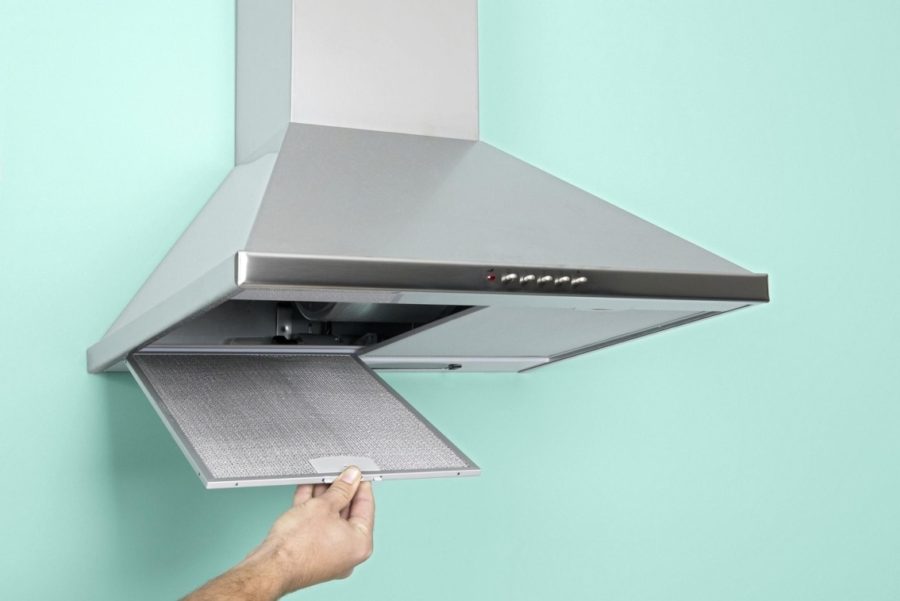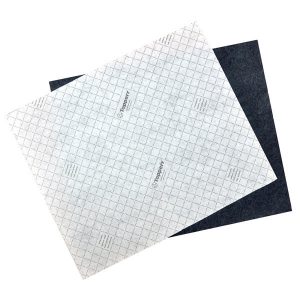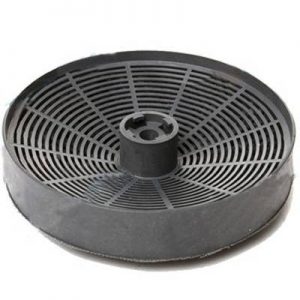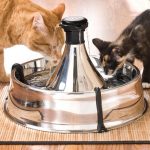The hood in the kitchen is an important element that does not allow odors, fumes and soot to spread throughout the apartment. Such a household appliance item is not a luxury, but a necessity. Today, the range of hoods is very large. They differ not only in appearance, but also in the type of filters. It is the type of filters for household hoods that is responsible for the quality of air purification. Our experts will tell you what kind of filters there are in hoods, what are their features and which is better to choose.

Content
Why do you need a filter in the hood
Kitchen hoods are powered by mains. They are divided into two main types:
- Air vents. They have a branch sleeve that can be built into the mine or facing the street. The motor draws air from the room and takes it out. The design is more complicated to install and requires stationary installation directly above the stove with the pipe outlet.
- Recirculating. They have no air vent. They draw in air, purify it and take it out again. Installing such devices is easier, since they can be installed anywhere, regardless of the shaft and end walls. Such a hood looks more aesthetically pleasing. And besides, she has one more plus: she provides an influx of clean air without the need to ventilate the room.
Located above the hob, the device draws in various vapors, particles of fat, and splashes. If a filter is not installed in the hood, then all these contaminants will quickly fall into the motor and damage it. Air vent devices are often mounted in shafts, and the air they draw out goes up all floors (when the house is multi-story). If the filter does not trap odors and some impurities, the neighbors above will suffer from dirty air. Indeed, through holes in the mine, he somehow seeps into other apartments.
In recirculation models, a filter is needed not only to protect the engine, but also to maximize the purification of air that enters the room again.
Thus, filters in cooker hoods perform two important functions at once:
- Protect the engine from grease, burning and other contaminants.
- Provide an environmentally friendly microclimate in homes.
Types of filters
In modern exhaust devices, three types of filters are used:
- Fatty.
- Coal.
- Universal.
Let us consider in detail each type of filtration system.
Fatty
A grease filter is a must in any cooker hood. It delays evaporation, grease and any other food spray, preventing them from being deposited on the inner walls, fan and motor. Without this filter, after just 2-3 months, all the inside of the hood would become greasy, sticky and very dirty, and the engine would likely burn out soon.
The grease filter is disposable and reusable. It is installed in a flat bottom panel through which air is drawn.

Disposable
They are found mainly in low-cost models. They are a layer of synthetic material: syntepon, non-woven or acrylic. The service life of such filters depends on the frequency of use of the stove. On average, it’s 1-2 months.
Such filters cannot be cleaned. As they become soiled, they must be removed and replaced with new ones. In some models of hoods, spare disposable "rugs" are included. In other cases, they must be purchased separately, which involves regular costs.
But there is an advantage in this: no need to waste time and effort on cleaning.

Reusable
The reusable filter is a fine metal mesh made of galvanized steel, aluminum or stainless steel. Such designs are durable and do not require replacement.
As they become soiled, they must be removed and washed. As a rule, they have special locks for easy removal and fastening.
Stainless steel nets are considered the highest quality. They do not oxidize, do not give in to deformation. Depending on the specific model of the hood and its size, a reusable grease filter can be single (solid) or consisting of 2-3 separate cartridges.
Coal
Charcoal filters for the kitchen hood are integrated in all recirculation devices. Their main task is to clean the air of impurities and odors. Visually, this is a plastic cassette consisting of several cartridges filled with activated carbon.
Air passing through all the coal compartments is completely cleaned and comes out fresh and disinfected. The carbon filter is always installed after the grease. If you do not protect it with a fat-absorbing net, then it will quickly become worthless, clogging with food sticky particles. The cartridges become dirty during use and require replacement. Depending on the manufacturer, they have different service lives from 3-4 to 6-7 months. If users rarely cook on the stove, then a charcoal filter can last a year.

Coal cassettes are rarely installed in conventional air exhaust hoods. But if you wish, you can buy such a filter separately and mount it in an air outlet pipe.
If you do not change the dirty carbon filter in time, the air flow will pass through it with difficulty, which will increase the load on the motor.
Universal
This is a more advanced type of filter that combines a carbon cartridge protected by a grease-absorbing material. Universal cleaning systems are relevant for recirculation hoods when the most efficient air cleaning is required.
The additional grease collecting layer of the material is also disposable and may require several replacements over the course of a single operating life of carbon cartridges.
There are also universal filters in which the walls of the cartridges themselves are composed of a special material that enhances the filtration efficiency.
On average, such a system lasts for 6-12 months, after which replacement is necessary.
Pros and cons of each filter
Any device will always have not only advantages, but also disadvantages. Let's consider what qualities each type of filter has in cooker hoods.
Reusable Fat
Pros:
- Durability.
- No cost to purchase new filters.
- It protects the inside of the hood from food contamination.
- Easy to remove and fit into place.
Minuses:
- It requires periodic cleaning.
- If the metal is of poor quality, then the panel may deform with time.
Disposable fat
Pros:
- High degree of protection against grease splashes and fumes.
- No need to wash, wash.
Minuses:
- Fixed costs for the purchase of new filters.
- It is necessary to monitor the cleanliness and change the gaskets in time, otherwise the hood will work poorly.
Carbonic
- High-quality air purification from small particles of dirt and an unpleasant smell.
- Simple design, with easy removal and installation.
Minuses:
- It gets dirty quickly.
- Requires timely replacement.
- High price.
Universal
Pros:
- It has two filtration systems.
- Effectively cleans the air.
- Longer service life.
Minuses:
- Requires replacement.
- Not always easy to find for sale.
- High price.
How many are enough
It is impossible to give an exact answer to the question of how long this or that filter will last, since it all depends on the frequency of use of the hob and the quality of the appliance itself. Below are the average filter life, based on the assumption that the stove is used every day at least 1 time.
- Reusable grease filter - 2-3 months.
- Disposable fat (metal) - has no time limits.
- Carbon conventional filter - from 5-7 months.
- Universal - 8-12 months.
Which is better to choose
So, having dealt with the device of all types of filters installed in kitchen hoods, we come to the main question - which is better?
There is no single answer to this question. It all depends on the needs of a particular user, the characteristics of his kitchen facilities, the budget that he is willing to spend.
The most popular were and remain conventional hoods with air vents and grease-collecting reusable (eternal) filters. There is no need to install carbon filtration systems in such structures: heavy and polluted air is still discharged into the mine or into the street.
When choosing this hood, you should pay attention to engine power. The efficiency of the device will depend on it.
If we consider the quality of reusable grease filters, then stainless steel grilles are in first place, galvanized steel is second, and aluminum alloy is third. Hoods with disposable filters are better not to take, otherwise you will have to constantly monitor their frequency and the availability of spare plates.
Recycling models with carbon filters are suitable for kitchens where it is difficult to make an air outlet to the mine or to the street.
In choosing such a filtration system, the quality of the filter itself matters. The higher it is, the better the indoor climate will be. It is worth giving preference to trusted brands, such as:
- Elikor;
- Jet Air
- Krona;
- Elica;
- Rowen;
- Titan.
Today on sale you can find universal carbon filters for various cooker hoods, suitable for most models with standard parameters. For those who are very concerned about the atmosphere in their home, it is recommended to take these types of filters.
Do not forget that any filtration system requires control. Reusable grids must be washed regularly, disposable grease and charcoal - change on time.
To remove hard-to-remove fatty traces, very effective products are sold today that allow you to easily clean even very dirty surfaces.
